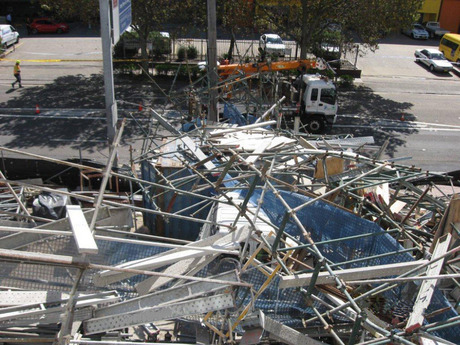Scaffold collapses: safety alert

Recent incidents involving scaffolds collapsing on job sites has prompted WorkCover NSW to release a safety alert highlighting the potential risks to workers’ safety.
The two incidents occurred when scaffolding had been reconfigured during the final stages of a building construction.
One incident saw the framework fall onto a public street allegedly causing injury to several workers. No-one was injured in the second incident when the scaffolding collapsed into a laneway and neighbouring properties.
What actions can you take?
WorkCover NSW gives the following recommendations for ensuring worker safety around scaffolding:
- Ensure the scaffold remains stable and supports the loadings imposed at all times ie, during erection, in situ, during and after any alterations, and when dismantling.
- Use a scaffold suitable for the construction process.
- Ensure the scaffold can withstand any anticipated loads or forces - eg, strong winds.
- Ensure the scaffold is adequately tied to its supporting structure, in accordance with instructions from a competent person - if this is not possible, consult with the scaffold designer, manufacturer, supplier or an engineer.
- Develop systems of work that allow construction activities, such as bricklaying, painting, rendering, glazing or cladding installation to be completed without unplanned changes or removal of scaffold ties - eg, work down from the top of a building as the scaffold is progressively dismantled or tie the scaffold to its supporting structure so that it does not interfere with the work.
- Display warning signs to prevent unauthorised access to the scaffold when it is incomplete and left unattended.
- Ensure the scaffold can’t be damaged by vehicles, plant, equipment or materials.
Get licensed and trained
- Ensure only competent persons with a relevant class of high risk work licence for scaffolding undertake scaffolding work*, including making alterations to existing scaffolding, and regularly inspect the scaffolding ties and equipment.
- Provide all workers with adequate information, instruction, training and supervision regarding the control measures required to prevent the collapse of the scaffold.
- Know the duty rating (light, medium, heavy or special) and number of decks that can be loaded within a bay and don’t overload the scaffold - eg, by storing scaffold components on decks when making alterations.
- Prepare a safe work method statement.**
*Scaffolding work means the erection, alteration or dismantling of a temporary structure erected to support platforms from which a person or object could fall more than 4 m.
**For high risk construction work; for example, when there is a risk of a person falling more than two metres, you must prepare and comply with a safe work method statement in accordance with Part 6.3, Division 2 of the Work Health and Safety Regulation 2011.
View the full alert here: http://www.workcover.nsw.gov.au/news/safety-alert/scaffolding-collapse.
Further information
Download the general guide for scaffolds and scaffolding work or access the Australian Standards: AS/NZS1576 Part 1: Scaffolding - general requirements; and AS/NZS4576: Guidelines for scaffolding.
Providing mental health support to young workers
Mental health is one of the leading reasons young workers do not finish their apprenticeships...
New psychology division supports organisational compliance
In recognition of the need to protect workers from psychosocial hazards in the workplace, Rehab...
Roof plumber dies after five-metre fall
The death of a 71-year-old roof plumber in October is currently being investigated by WorkSafe WA.







